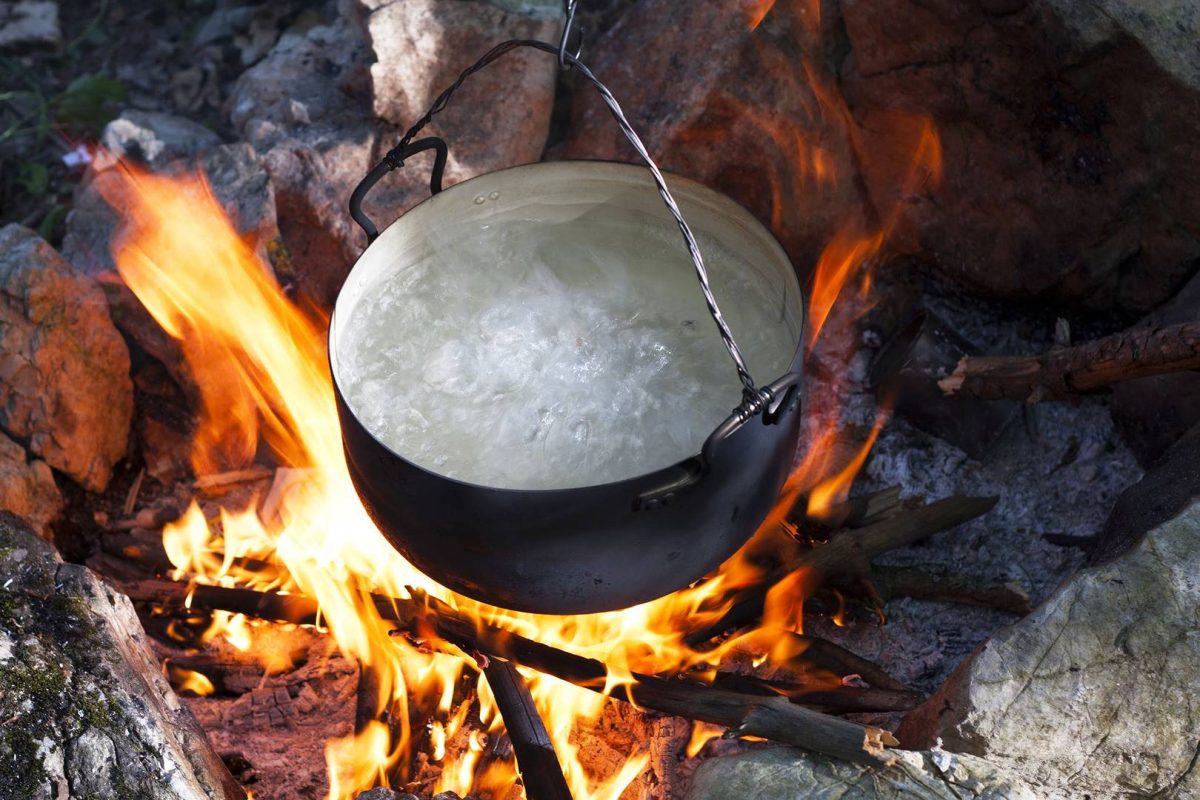Dutch Oven Campfire Cooking

Dutch Oven Campfire Cooking
Camping season is upon us and it’s time to think of what you’re going to eat. Sure, you could do the easy stuff like cereal for breakfast, sandwiches for lunch, and roast a hotdog over the fire for dinner. But why not try something a little better? Who wouldn’t like a full meal with three or more items that would put you into a food coma?
Let me introduce you to the dutch oven.
History
Dutch ovens have been around for quite a bit of time now. First invented around 1700 in the Netherlands, dutch ovens have stood the test of time and are still one of the most valuable items a camping family should have in their arsenal.
In our American history, these cast-iron pots have been used from the east to the west coast as Americans came to North America and eventually settled the west. They were so valuable to people that they often included them in their wills. Specifying who was to get his or her ironware when somebody passed away.
Dutch ovens are very durable, easy to clean (once they are used enough), and are very versatile. They come in a variety of sizes and can be a little bit of a cost. However, personally, I will tell you they are worth the money and investment. With vigilant care, your dutch oven will last you the rest of your life. Much longer than any store-bought pan you will ever purchase.
Uses
Dutch ovens can be used for a variety of different types of cooking. Let me explain a few. First of all, these aren’t called “ovens” just because somebody thought it would sell better. They actually are small little ovens when used in a particular way. They can be used to bake bread, biscuits, and any other specialty bread item you thought you’d like to try. How about monkey bread? Yep! It too can be baked to perfection in a dutch oven.
The lid of a dutch oven can even be flipped upside down to use as a skillet to do fried eggs, bacon, or pancakes. They can be used to cook a campfire stew too. With the proper heating and ingredients, a slow-cooked stew could be ready for you to eat after hours of play outside. Just about any meal could be cooked in these. That’s why they are so great to have and use.
Proper Care
There are a couple of important things that you’ll need to know if you are going to dive into cooking with dutch ovens. First, NEVER use soap on your dutch oven! You will notice a darkened color to the cast iron. When you clean your pot or pan, use a scrubbing utensil and water. Never use soap, but if you need extra help, use a coarse salt. The more you use your dutch oven, the more it will become “seasoned”, making it non-stick, easier to clean, and darker in color.
Next, your heat ratios. You’ll notice when you purchase a true dutch oven, it will look a little different that other pots that you’ve seen. It should have three legs on the bottom of the pot. There should also be a little ledge around the edge of the lid. These two features are very important details that will allow you to use your dutch oven the way it’s supposed to be used.
The way that you get the proper heating in an oven is by using heat above AND below the pot. By putting coals up on top of the lid as well as placing hot coals below the pot, heat will begin to “roll’ in the pot. Thus, baking and cooking will begin to happen. The number of coals you put above and below your dutch oven. is important to how well things cook. If you’re just beginning, I would suggest using charcoal briquettes. That way you have something to “count” as you distribute your coals.
When placing your coals on top and below the dutch oven, as a general rule, have twice as many coals on top of the oven as you do below. For instance, if you have 12 coals/briquettes below your dutch oven., then you’d want 24 coals/briquettes on top. This will get the proper process of heat rolling to cook most recipes. Consider stacking your dutch ovens on top of each other. You could get the next size smaller and, just stack it on top of the larger dutch oven and get great results. The heat from the bottom is cooking the entire tower!
Now, there are some recipes that have different ratios. But, for what I’ll give you here in a bit, that’s the general ratio you’ll need for these tasty meals.
Another thing to remember, dutch ovens do not have a temperature dial. Which means you can’t, with 100% accuracy, keep your temperatures constant through your entire cook time. If it’s colder out, you might have to add more coals through the cooking time. Or if the winds blowing, you might have to create a little wind break to protect your oven. If your coals are burning out quick, you’ll have to use coals from a reserve pile (good to have) to add from time to time to keep the heat.
Simple recipes, relaxed cooking, and easy cleanup. Sounds appealing, doesn’t it? Well, if so, go out and get a good cast iron dutch oven! I promise you that you won’t regret it. It will open a whole new element of fun and satisfaction to your camping experience. Good luck!
By Ryan Graden
June 2022


